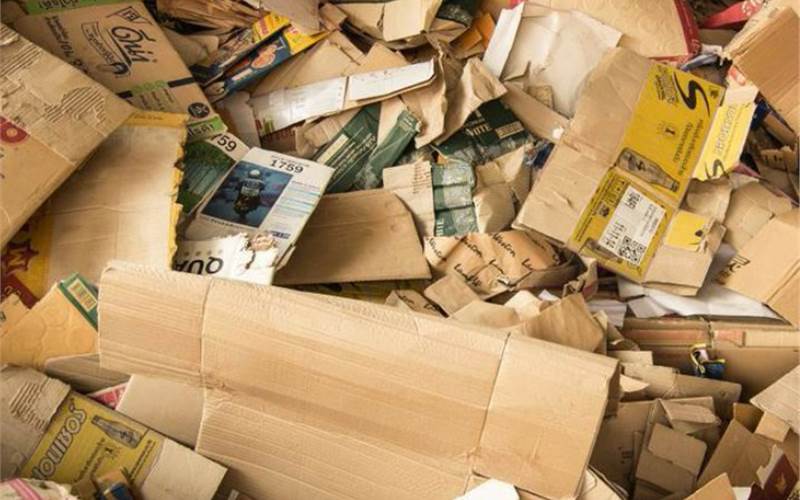ICCMA webinar looks at Indian waste paper market challenges
International waste paper and paperboard trends and its impact on the Indian kraft paper market was the topic on focus at the Indian Corrugated Case Manufacturers' Association (ICCMA) webinar on 27 November 2020.
05 Dec 2020 | By WhatPackaging? Team
The panelists for the session included Michael Arcieri of Ekman, Inder and Garima Aurora of Unisource Papers, Nilesh Dadia of Pratik Pulp, Sanjay Rajgarhia of Perfectpac and Sanjeev Khandelwal of Stora Enso. While Kirit Modi of Horizon Packs was the moderator for the webinar.
For the past four-five months, the corrugated box industry has been facing an array of challenges due to the constant increase in prices of paper and paperboard. “Cumulatively, the prices have already crossed 25-30% of the pre-Covid levels,” said Modi.
He added, “The time to dwell on kraft paper prices, input costs such as manpower, freight and other overheads have witnessed an increase of 60-70% in the last few years.”
The panelists discussed that the prices of both domestic and imported waste paper prices have gone up by Rs 4,500-5,000 per tonne in the last couple of months. The suppliers and distributors servicing the box makers are offering different narratives for these hikes. According to the paper mills and suppliers, two key factors have been responsible for this price hike. First, the RCP import prices have doubled as compared to the previous year. And secondly, the dislocation of container movement affecting the freight cost and the supply chain disruption due to the Covid-19 induced lockdown.
So, the problem is twofold – the increase in paper prices and the supply chain disruption affecting the delivery cycles.
The panelists further highlighted that both – China and India – import their waste paper primarily from the USA and Europe for kraft paper manufacturing. And China’s proposed ban on waste paper imports from January 2021 is causing Chinese paper mills to stock up the waste paper supplies available in overseas markets. Due to the domestic fibre shortage, China also started the imports of kraftliner board (KLB) and testiner (TL) among others. While other Asian countries also increased their exports to China.
They mentioned that the packaging industry will be at crossroads in 2021 due to China's import ban on the recovered paper (RCP) paper grades. Also, governments around the world are looking at mixed paper grades unfavourably, since the perception about mixed paper to be contaminated has become a reality.

There has been a 30% shortage in the waste paper for containerboard due to restrictions
Thus, along with insights on the International trends, the three key areas of the discussion during the 27 November webinar were about the RCP prices and its impact on the domestic waste paper prices, the KLB and TL prices and India’s RCP and old corrugated cardboard (OCC) paper grade exports. According to Modi, the common factor among all the three areas was the logistics challenges and the shipping cost.
Unisource’s Inder Aurora highlighted the imbalance in supply and demand caused by the decision of the Chinese government to establish specifications for imported recyclables. He said, “China's paper and paperboard production grew to 120 million MT in 2015 from 10 million MT in 1990. There has been a 30% shortage in the waste paper for containerboard due to restrictions, which has resulted in the spurt in domestic cardboard prices and a deficit for boards in China. This has caused uncertainty for certain grades of paper.”
Meanwhile, Pratik Pulp's Nilesh Dadia shared some RCP data – China imported 17 million tonnes of RCP in 2018, down from 28.5 million tonnes in 2016. These imports plunged by about 8.7 million tonnes in 2018, which is about 7.5 million tonnes of recycled fibre gap.
Modi concluded the seminar by saying, China is the X factor. “China is the largest consumer and importer of containerboard in the world; it is the largest exporter of manufactured goods which need packaging. Finally, it is the first nation to recover from the virus' impact and notch a positive GDP. How 2021 unfolds for the corrugation industry will depend on this X factor.”
The containerboard crisis
Package manufacturing and packaging services are the two potential segments for the Indian packaging sector, where the industry can expand considerably both onshore and offshore. But in the past eight months (indeed since 2018), a crisis has been looming ...
1) Indian paper mills have not been able to import adequate volumes of RCP during the Covid induced lockdown period. This has resulted in their inventory drying up.
2) The global restriction on waste collection due to the pandemic is expected to keep the RCP prices at elevated levels in the near future.
As the ICCMA data states, there are more than ten thousand small- and mid-sized players in the corrugated box industry. This industry employs about six lakh people, has the capacity to produce six million tonnes of boxes per annum and logs a turnover of about 24,000 crores per annum.
The increase in kraft paper prices, plus input costs such as manpower, starch, freight and other overheads have witnessed a 60-70% increase in costs.
Who should absorb the price hike?
- Converters
- Paper mills
- Consumers
- Brands
Click here to answer













 See All
See All